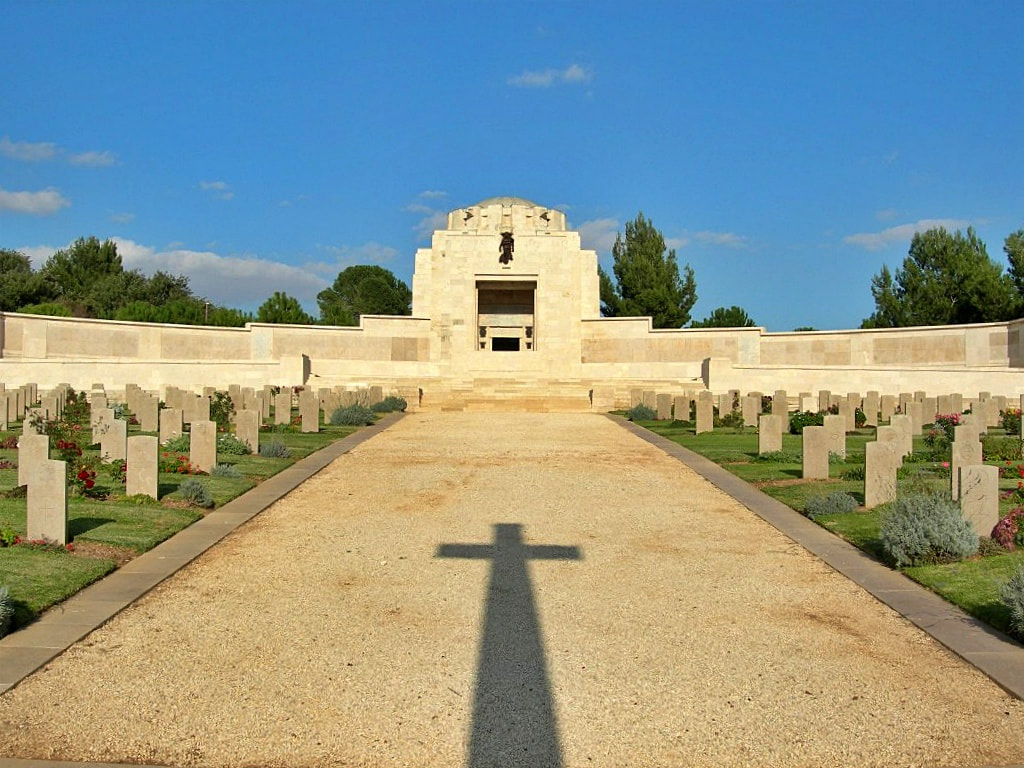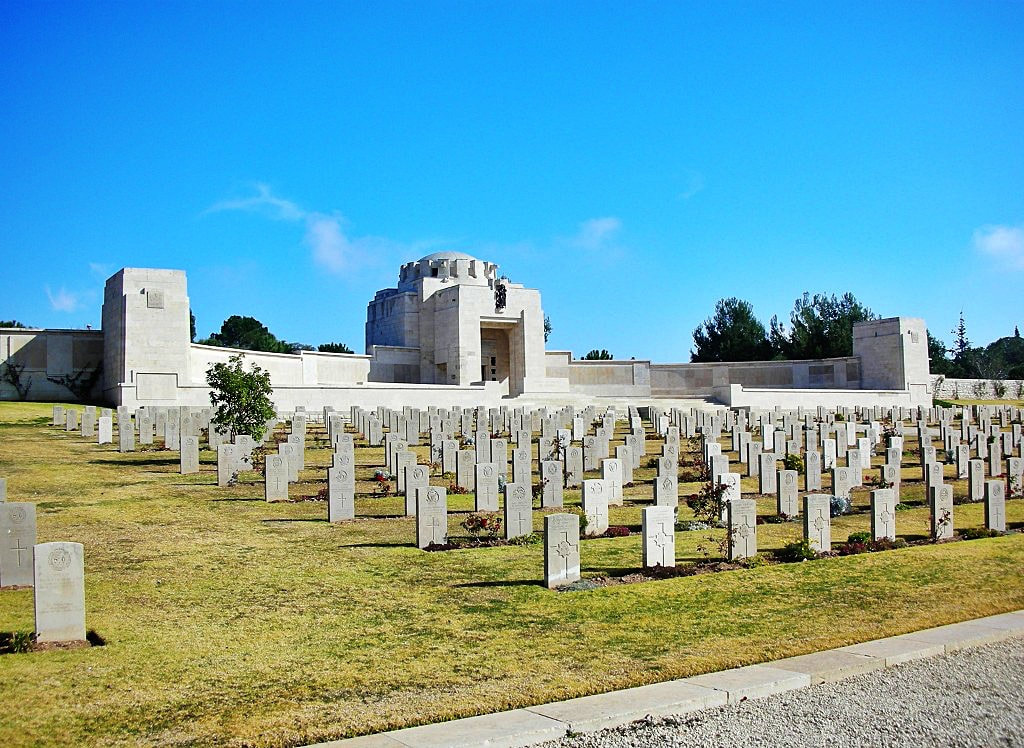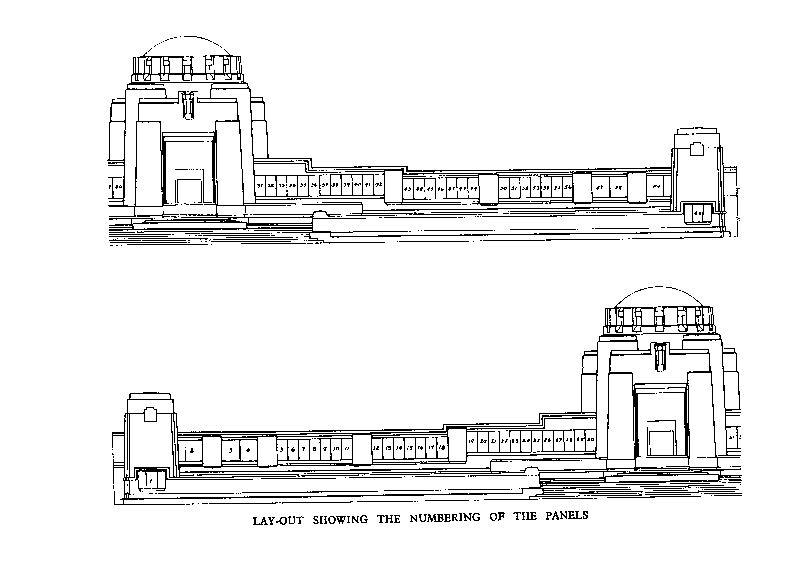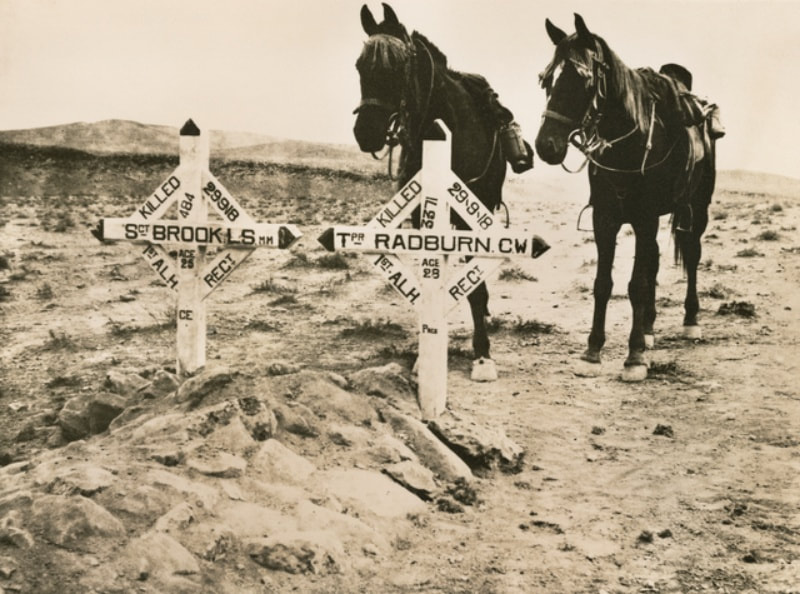JERUSALEM MEMORIAL
Jerusalem
Israel and Palestine (Including Gaza)
GPS Coordinates: Latitude: 31.79812, Longitude: 35.23947
Location Information
The Jerusalem Memorial stands in Jerusalem War Cemetery, 4.5 kilometres north of the walled city and is situated on the neck of land at the north end of the Mount of Olives, to the west of Mount Scopus. The cemetery is found on Churchill Blvd, sandwiched between Hadassah Hospital and the Hyatt Hotel. An Australian Memorial is opposite the cemetery entrance.
Visiting Information
The Memorial is situated within the Jerusalem War Cemetery which is permanently open and may be visited at any time.
Robert Anning Bell's mosaic, commissioned by the New Zealand Government to honour its forces that took part in the operations in Sinai and Palestine, can be seen in the Memorial Chapel. This is opened by appointment only, but unfortunately due to its design, it is not accessible to wheelchair users.
Wheelchair access to the cemetery is possible via an alternative entrance however there is no access to the Memorial. For further information and enquiries please contact [email protected]
Historical Information
At the outbreak of the First World War, Palestine (now Israel) was part of the Turkish Empire and it was not entered by Allied forces until December 1916. The advance to Jerusalem took a further year, but from 1914 to December 1917, about 250 Commonwealth prisoners of war were buried in the German and Anglo-German cemeteries of the city.
By 21 November 1917, the Egyptian Expeditionary Force had gained a line about five kilometres west of Jerusalem, but the city was deliberately spared bombardment and direct attack. Very severe fighting followed, lasting until the evening of 8 December, when the 53rd (Welsh) Division on the south, and the 60th (London) and 74th (Yeomanry) Divisions on the west, had captured all the city's prepared defences. Turkish forces left Jerusalem throughout that night and in the morning of 9 December, the Mayor came to the Allied lines with the Turkish Governor's letter of surrender. Jerusalem was occupied that day and on 11 December, General Allenby formally entered the city, followed by representatives of France and Italy.
Meanwhile, the 60th Division pushed across the road to Nablus, and the 53rd across the eastern road. From 26 to 30 December, severe fighting took place to the north and east of the city but it remained in Allied hands.
JERUSALEM WAR CEMETERY was begun after the occupation of the city, with 270 burials. It was later enlarged to take graves from the battlefields and smaller cemeteries in the neighbourhood.
There are now 2,514 Commonwealth burials of the First World War in the cemetery, 100 of them unidentified.
Total Burials: 2,540.
World War One Identified Casualties: United Kingdom 2,184, Australia 144, South Africa 51, New Zealand 34, Germany 16, Italy 4, India 2. Total 2,435.
World War One Unidentified Casualties: United Kingdom 35, Unknown 65. Total 100.
Within the cemetery stands the JERUSALEM MEMORIAL, commemorating 3,312 Commonwealth servicemen who died during the First World War in operations in Egypt or Palestine and who have no known grave.
The memorial was designed by Sir John Burnet, with sculpture by Gilbert Bayes. In addition, the mosaic in the Memorial Chapel was designed by Robert Anning Bell. The Memorial was unveiled by Lord Allenby and Sir James Parr on 7 May 1927.
Images below used with the permission of the CWGC
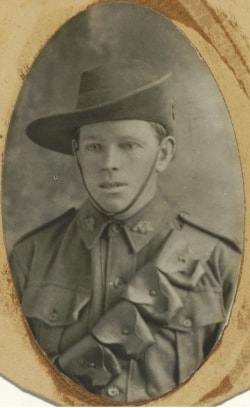
2638 Trooper
William Walter Ash
4th Australian Light Horse
2nd May 1918, aged 23.
Panel 58.
Son of Frances Ash, of Lake Boga, Victoria, Australia, and the late William Ash.
Studio portrait of 2638 Trooper William Walter Ash, 4th Australian Light Horse Regiment. A labourer prior to enlisting on 9 February 1916, he embarked from Melbourne aboard RMS Mongolia on 11 July 1916. His brother, 2125 Private Thomas Able, enlisted shortly after William on 13 May 1916, embarking from Melbourne aboard HMAT Orsova (A67) on 1 August 1916. William was killed in action on 2 May 1918 while in Palestine. He was 23 years old. Thomas returned to Australia on 31 March 1919.
William Walter Ash
4th Australian Light Horse
2nd May 1918, aged 23.
Panel 58.
Son of Frances Ash, of Lake Boga, Victoria, Australia, and the late William Ash.
Studio portrait of 2638 Trooper William Walter Ash, 4th Australian Light Horse Regiment. A labourer prior to enlisting on 9 February 1916, he embarked from Melbourne aboard RMS Mongolia on 11 July 1916. His brother, 2125 Private Thomas Able, enlisted shortly after William on 13 May 1916, embarking from Melbourne aboard HMAT Orsova (A67) on 1 August 1916. William was killed in action on 2 May 1918 while in Palestine. He was 23 years old. Thomas returned to Australia on 31 March 1919.
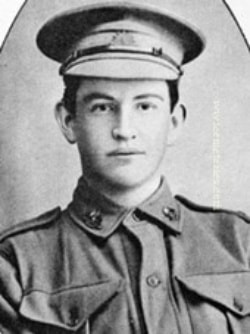
1210 Trooper
Raymond John Bloodworth
6th Australian Light Horse
29th November 1917, aged 21.
Panel 58.
Son of John Andrew and Ellen Bloodworth, of 56, Willoughby St., Milson's Point, New South Wales. Native of Coonamble, New South Wales.
Studio portrait of 1210 Private (later Trooper) Raymond John Bloodworth, 6th Light Horse Regiment, of Coonamble, NSW. A bank clerk prior to enlistment, he embarked from Sydney on HMAT Suffolk (A23) on 28 July 1915. He was killed in action near Jerusalem, Palestine on 29 November 1917, aged 21. el.
Raymond John Bloodworth
6th Australian Light Horse
29th November 1917, aged 21.
Panel 58.
Son of John Andrew and Ellen Bloodworth, of 56, Willoughby St., Milson's Point, New South Wales. Native of Coonamble, New South Wales.
Studio portrait of 1210 Private (later Trooper) Raymond John Bloodworth, 6th Light Horse Regiment, of Coonamble, NSW. A bank clerk prior to enlistment, he embarked from Sydney on HMAT Suffolk (A23) on 28 July 1915. He was killed in action near Jerusalem, Palestine on 29 November 1917, aged 21. el.
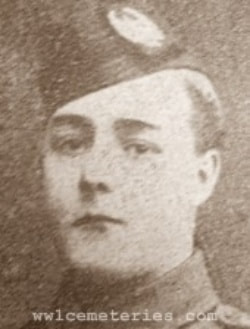
291396 Private
Harry Cross
1/8th Scottish Rifles
Killed in Action 19th April 1917 in Mesopotamia, aged 20.
Panel 25.
Son of Matthew and Ellen Cross, of 13, Cotton St., Burnley.
Harry Cross
1/8th Scottish Rifles
Killed in Action 19th April 1917 in Mesopotamia, aged 20.
Panel 25.
Son of Matthew and Ellen Cross, of 13, Cotton St., Burnley.
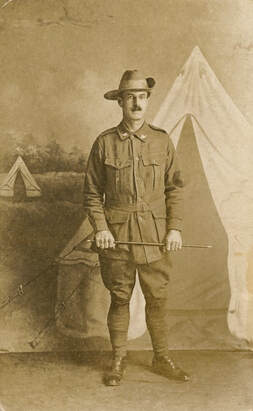
493 Trooper
Jack Ellis
5th Australian Light Horse
3rd May 1918, aged 28.
Panel 58.
Son of Thomas and Elizabeth Ellis, of Richmond, Queensland. Native of Byrock, New South Wales.
Click on image to enlarge
Studio portrait of 493 Trooper (Tpr) Jack Ellis. The back of the photograph is inscribed 'Jack Ellis 19.4.17'. A stockman from Richmond, Queensland, Tpr Ellis enlisted on 30 October 1914 and embarked with the 5th Light Horse Regiment, C Squadron, aboard HMAT Persic (A34) on 21 December 1914. Tpr Ellis served with the unit at Gallipoli and later as part of the Anzac Mounted Division in Sinai and Palestine. Tpr Ellis was severely wounded during the raid on Es Salt (30 April-4 May 1918). According to his service record he died before reaching the Field Ambulance and owing to the unit's evacuation his body was never recovered and buried.
Jack Ellis
5th Australian Light Horse
3rd May 1918, aged 28.
Panel 58.
Son of Thomas and Elizabeth Ellis, of Richmond, Queensland. Native of Byrock, New South Wales.
Click on image to enlarge
Studio portrait of 493 Trooper (Tpr) Jack Ellis. The back of the photograph is inscribed 'Jack Ellis 19.4.17'. A stockman from Richmond, Queensland, Tpr Ellis enlisted on 30 October 1914 and embarked with the 5th Light Horse Regiment, C Squadron, aboard HMAT Persic (A34) on 21 December 1914. Tpr Ellis served with the unit at Gallipoli and later as part of the Anzac Mounted Division in Sinai and Palestine. Tpr Ellis was severely wounded during the raid on Es Salt (30 April-4 May 1918). According to his service record he died before reaching the Field Ambulance and owing to the unit's evacuation his body was never recovered and buried.
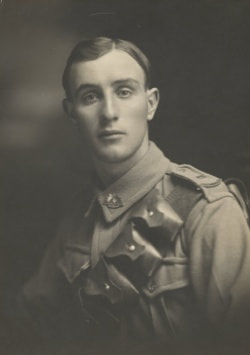
863 Trooper
Richard Graham
1st Australian Bn. Imperial Camel Corps (Australian)
19th April 1917, aged 23.
Panel 60.
Son of James and Emily Graham. Born in Australia.
Studio portrait of 863 Trooper (Tpr) Richard (Dick) Graham, 1st Light Horse Regiment, of Wagga Wagga, NSW. A labourer prior to enlistment, he embarked with the 4th Reinforcements from Sydney aboard HMAT Shropshire on 17 March 1915. Arriving at Gallipoli on 29 September 1915, Tpr Graham was evacuated sick to a hospital at Malta the following month. Rejoining his unit in March 1916 in Egypt, he was later transferred to the 1st Battalion, Imperial Camel Corps. Tpr Graham was killed in action in Palestine on 19 April 1917, aged 23.
Richard Graham
1st Australian Bn. Imperial Camel Corps (Australian)
19th April 1917, aged 23.
Panel 60.
Son of James and Emily Graham. Born in Australia.
Studio portrait of 863 Trooper (Tpr) Richard (Dick) Graham, 1st Light Horse Regiment, of Wagga Wagga, NSW. A labourer prior to enlistment, he embarked with the 4th Reinforcements from Sydney aboard HMAT Shropshire on 17 March 1915. Arriving at Gallipoli on 29 September 1915, Tpr Graham was evacuated sick to a hospital at Malta the following month. Rejoining his unit in March 1916 in Egypt, he was later transferred to the 1st Battalion, Imperial Camel Corps. Tpr Graham was killed in action in Palestine on 19 April 1917, aged 23.
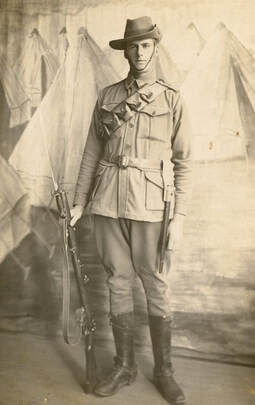
390 Sergeant
Richard Hobley
8th Australian Light Horse
9th August 1916, aged 23.
Panel 58.
Son of William Henry and Elizabeth Hobley, of Rosebud, Dromana, Victoria, Australia. Native of Rosebud, Victoria.
Click on image to enlarge
Studio portrait of 390 Private (Pte) Richard Hobley, 8th Australian Light Horse Regiment (LHR). A farmer from Leongatha, Victoria prior to enlistment, Pte Hobley embarked with C Squadron from Melbourne on HMAT Star of Victoria on 25 February 1915. Whilst serving at Gallipoli he was wounded in action and later returned to duty. Following his promotion to Sergeant he was killed in action on the Sinai Peninsular on 9 August 1916, aged 23, and is commemorated on the Jerusalem Memorial, Israel. His brother 2027 Sergeant Joseph Hobley DCM served with 4th LHR and 3rd Field Artillery Brigade.
Richard Hobley
8th Australian Light Horse
9th August 1916, aged 23.
Panel 58.
Son of William Henry and Elizabeth Hobley, of Rosebud, Dromana, Victoria, Australia. Native of Rosebud, Victoria.
Click on image to enlarge
Studio portrait of 390 Private (Pte) Richard Hobley, 8th Australian Light Horse Regiment (LHR). A farmer from Leongatha, Victoria prior to enlistment, Pte Hobley embarked with C Squadron from Melbourne on HMAT Star of Victoria on 25 February 1915. Whilst serving at Gallipoli he was wounded in action and later returned to duty. Following his promotion to Sergeant he was killed in action on the Sinai Peninsular on 9 August 1916, aged 23, and is commemorated on the Jerusalem Memorial, Israel. His brother 2027 Sergeant Joseph Hobley DCM served with 4th LHR and 3rd Field Artillery Brigade.
Grave markers of 484 Sergeant (Sgt) Louis Shannon Brook MM, of Pimpino, Victoria, and 3371 Trooper (Tpr) Clarence William Radburn, of Neville, NSW, both of the 1st Australian Light Horse Regiment. Both men were killed when they were ambushed by Turkish soldiers on 28 September 1918, although these original grave crosses are marked 29.9.1918. Their saddled horses are standing behind the soldiers' graves.
Despite detailed notes and maps on the location of the graves on Tpr Radburn's service record, they were never found by grave registration units in 1922. Sgt Brook is now commemorated on Panel 58 at the Jerusalem Memorial and Tpr Radburn on Panel 59 at the Jerusalem Memorial.
Despite detailed notes and maps on the location of the graves on Tpr Radburn's service record, they were never found by grave registration units in 1922. Sgt Brook is now commemorated on Panel 58 at the Jerusalem Memorial and Tpr Radburn on Panel 59 at the Jerusalem Memorial.
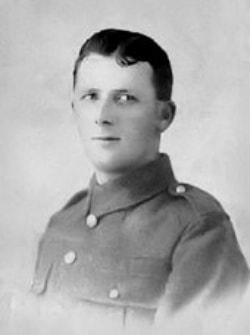
290081 Private
John Frederick Jones
7th Bn. Royal Welsh Fusiliers
26/03/1917, aged 23.
Panel 20-22.
Son of John Thomas Jones and Jane Jones, of 39, Smithfield St., Llanidloes, Mont
Picture courtesy of Dave Brady
John Frederick Jones
7th Bn. Royal Welsh Fusiliers
26/03/1917, aged 23.
Panel 20-22.
Son of John Thomas Jones and Jane Jones, of 39, Smithfield St., Llanidloes, Mont
Picture courtesy of Dave Brady
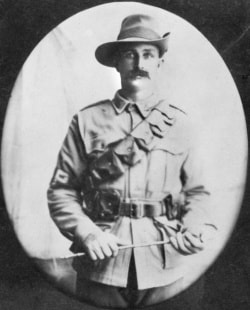
13 Lance Corporal
Michael John Mahoney
3rd Australian Bn. Imperial Camel Corps (Australian)
19th April 1917, aged 41.
Panel 59.
Studio portrait of 13 Lance Corporal (L Cpl) Michael John Mahoney, 3rd Battalion, Imperial Camel Corps from Coleraine, Victoria. A 39 year old labourer prior to enlisting on 24 September 1914, he embarked for overseas with the 3rd Light Horse Brigade Headquarters from Melbourne on 25 February 1915 aboard HMAT Star of Victoria. After serving with the Brigade Headquarters at Gallipoli, followed by brief periods of illness, he transferred to the 8th Light Horse Regiment and then to the Imperial Camel Corps in September 1916. Whilst serving with the latter unit, he was killed in action at the Second Battle of Gaza on 19 April 1917.
Michael John Mahoney
3rd Australian Bn. Imperial Camel Corps (Australian)
19th April 1917, aged 41.
Panel 59.
Studio portrait of 13 Lance Corporal (L Cpl) Michael John Mahoney, 3rd Battalion, Imperial Camel Corps from Coleraine, Victoria. A 39 year old labourer prior to enlisting on 24 September 1914, he embarked for overseas with the 3rd Light Horse Brigade Headquarters from Melbourne on 25 February 1915 aboard HMAT Star of Victoria. After serving with the Brigade Headquarters at Gallipoli, followed by brief periods of illness, he transferred to the 8th Light Horse Regiment and then to the Imperial Camel Corps in September 1916. Whilst serving with the latter unit, he was killed in action at the Second Battle of Gaza on 19 April 1917.
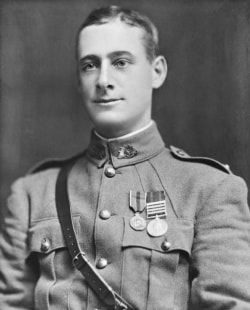
Captain
Frederick Henry Naylor, Mentioned in Despatches
1st Australian Bn. Imperial Camel Corps (Australian)
19th April 1917, aged 39.
Son of William Henry and Fanny Naylor, of 33, Finch St., East Malvern, Victoria, Australia. Native of Melbourne, Victoria.
Studio portrait of Second Lieutenant Frederick Henry Naylor, Imperial Camel Corps from Malvern Victoria. A 36 year old plantation manager prior to being appointed an officer in the AIF on 16 April 1915, he had previously served with the 4th Victorian Contingent to South Africa from March 1900 to September 1901. He embarked for overseas with the 21st Battalion Headquarters staff from Melbourne on 10 May 1915 aboard HMAT Ulysses. After being promoted to Lieutenant on 26 August 1915, he transferred to the Camel Corps on 1 February 1916 and was promoted to Captain on 1 March 1916. While serving in the Middle East, he was Mentioned in Despatches for gallantry and was later killed in action near Gaza on 19 April 1917.
Frederick Henry Naylor, Mentioned in Despatches
1st Australian Bn. Imperial Camel Corps (Australian)
19th April 1917, aged 39.
Son of William Henry and Fanny Naylor, of 33, Finch St., East Malvern, Victoria, Australia. Native of Melbourne, Victoria.
Studio portrait of Second Lieutenant Frederick Henry Naylor, Imperial Camel Corps from Malvern Victoria. A 36 year old plantation manager prior to being appointed an officer in the AIF on 16 April 1915, he had previously served with the 4th Victorian Contingent to South Africa from March 1900 to September 1901. He embarked for overseas with the 21st Battalion Headquarters staff from Melbourne on 10 May 1915 aboard HMAT Ulysses. After being promoted to Lieutenant on 26 August 1915, he transferred to the Camel Corps on 1 February 1916 and was promoted to Captain on 1 March 1916. While serving in the Middle East, he was Mentioned in Despatches for gallantry and was later killed in action near Gaza on 19 April 1917.
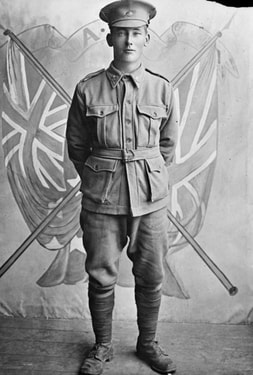
488 Trooper
Carl Leaton Pearce
1st Australian Bn. Imperial Camel Corps (Australian)
30th March 1918.
Panel 60.
Click on image to enlarge
Studio portrait of 488 Trooper Carl Pearce, 1st Australian Battalion Imperial Camel Corps, who was killed in action in Jordan on 30 March 1918. He was one of five brothers to serve in the First World War. 2/1762 Corporal Herbert Pearce enlisted in the Auckland Regiment, New Zealand Expeditionary Force, and died in Egypt 17 August 1915 from wounds received at Gallipoli; 2184 Richard Henry Pearce, 15th Battalion AIF, was killed in action at Gallipoli on 27 August 1915; 5745 Private Stanley Garrett Pearce, 5th Battalion AIF, was killed in action in France on 20 August 1916. A fifth brother, Edward Pearce, survived and returned to Australia. Unlike his three deceased brothers, Herbert Pearce as a member of an allied force does not appear on the Roll of Honour at the Australian War Memorial but is listed on the Commemorative Roll of Australians who died serving with allied forces. The five brothers were from the Ballarat region of Victoria.
Corporal Herbert Pearce is buried at Alexandria (Chatby) Military And War Cemetery.
Private Richard Henry Pearce is commemorated on the Lone Pine Memorial at Gallipoli.
Private Stanley Garrett Pearce is commemorated on the Villers-Bretonneux Memorial on the Somme.
Carl Leaton Pearce
1st Australian Bn. Imperial Camel Corps (Australian)
30th March 1918.
Panel 60.
Click on image to enlarge
Studio portrait of 488 Trooper Carl Pearce, 1st Australian Battalion Imperial Camel Corps, who was killed in action in Jordan on 30 March 1918. He was one of five brothers to serve in the First World War. 2/1762 Corporal Herbert Pearce enlisted in the Auckland Regiment, New Zealand Expeditionary Force, and died in Egypt 17 August 1915 from wounds received at Gallipoli; 2184 Richard Henry Pearce, 15th Battalion AIF, was killed in action at Gallipoli on 27 August 1915; 5745 Private Stanley Garrett Pearce, 5th Battalion AIF, was killed in action in France on 20 August 1916. A fifth brother, Edward Pearce, survived and returned to Australia. Unlike his three deceased brothers, Herbert Pearce as a member of an allied force does not appear on the Roll of Honour at the Australian War Memorial but is listed on the Commemorative Roll of Australians who died serving with allied forces. The five brothers were from the Ballarat region of Victoria.
Corporal Herbert Pearce is buried at Alexandria (Chatby) Military And War Cemetery.
Private Richard Henry Pearce is commemorated on the Lone Pine Memorial at Gallipoli.
Private Stanley Garrett Pearce is commemorated on the Villers-Bretonneux Memorial on the Somme.
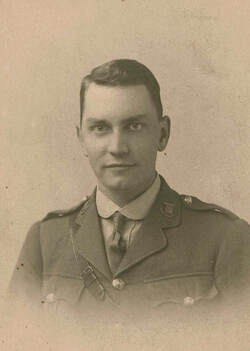
Captain
Leonard Bramhall Rayner
6th Bn. Essex Regiment
27th March 1917, aged 23.
Panel 32-38.
Son of James Arthur and Sarah Ann (Nee Bramhall) Rayner of Stoke, Newington, London.
Brother to Ivy and 2nd Lieutenant Cecil Arthur 6th Bn. Essex Regiment who was killed on 9th November 1915 in Gallipoli and is commemorated on the Helles Memorial.
Image courtesy of Craig Nichols (Family Member)
Click on image to enlarge
Leonard Bramhall Rayner
6th Bn. Essex Regiment
27th March 1917, aged 23.
Panel 32-38.
Son of James Arthur and Sarah Ann (Nee Bramhall) Rayner of Stoke, Newington, London.
Brother to Ivy and 2nd Lieutenant Cecil Arthur 6th Bn. Essex Regiment who was killed on 9th November 1915 in Gallipoli and is commemorated on the Helles Memorial.
Image courtesy of Craig Nichols (Family Member)
Click on image to enlarge
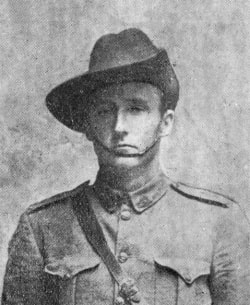
Second Lieutenant
Francis William Slattery
3rd Australian Light Horse Machine Gun Squadron
17th September 1916.
Panel 60.
Studio portrait of Lieutenant (Lt) Francis William Slattery, carpenter, of South Melbourne, Victoria. He enlisted as a Private (Pte) in the 9th Light Horse Regiment (9 LHR) on 5 October 1914 and was promoted to Corporal (Provisional) in November 1914 and then to Sergeant (Provisional) in December 1914. He embarked from Melbourne aboard HMAT Karroo on 11 February 1915 for Gallipoli. In September 1915 he was confirmed as the Regimental Sergeant Major with the rank of Warrant Officer (WO). In December 1915 the 9 LHR was withdrawn to Alexandria and served in Egypt, Sinai and Palestine. On 2 September 1915 he was promoted to Second Lieutenant (2nd Lt) and seconded to the 3rd Light Horse Brigade Machine Gun Squadron. 2nd Lt Slattery was killed in action near Bir el Mazar on 17 September 1916. He was aged 31 years.
Francis William Slattery
3rd Australian Light Horse Machine Gun Squadron
17th September 1916.
Panel 60.
Studio portrait of Lieutenant (Lt) Francis William Slattery, carpenter, of South Melbourne, Victoria. He enlisted as a Private (Pte) in the 9th Light Horse Regiment (9 LHR) on 5 October 1914 and was promoted to Corporal (Provisional) in November 1914 and then to Sergeant (Provisional) in December 1914. He embarked from Melbourne aboard HMAT Karroo on 11 February 1915 for Gallipoli. In September 1915 he was confirmed as the Regimental Sergeant Major with the rank of Warrant Officer (WO). In December 1915 the 9 LHR was withdrawn to Alexandria and served in Egypt, Sinai and Palestine. On 2 September 1915 he was promoted to Second Lieutenant (2nd Lt) and seconded to the 3rd Light Horse Brigade Machine Gun Squadron. 2nd Lt Slattery was killed in action near Bir el Mazar on 17 September 1916. He was aged 31 years.

